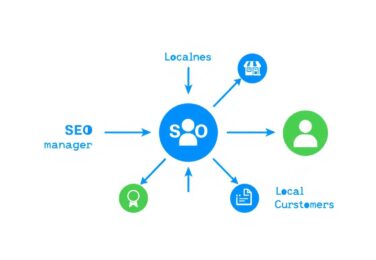How SEO work with AI and AI Agents

Table of Content
We’ve all felt the strain of endless spreadsheets and slow cycles when trying to lift a site’s performance. Today, that grind meets smarter systems that analyse search signals in real time and help us move faster.
We explain how agents act as tireless teammates, running continuous audits, predicting keywords and suggesting content and technical fixes.
Our aim is simple: show where automated systems slot into content and technical optimisation, what tools deliver real insights, and where human oversight must stay in charge.
If you’re on Shopify and stuck on customisation, contact hello@defyn.com.au for hands-on support.
Key Takeaways
- Agents speed up keyword research and audits, saving us valuable time.
- Automated tools provide continuous data and real‑time search insights.
- Human oversight remains vital for tone, trust and final quality checks.
- Start small: focus on high‑impact technical fixes and content gaps first.
- Local market nuances matter — advice is tailored to Australian contexts.
- Reach out to hello@defyn.com.au for Shopify customisation support.
Understanding modern SEO and how AI fits in today
Today’s search landscape rewards sites that balance fast technical foundations, relevant content and clear user pathways.
What optimisation covers
We treat optimisation as a system of connected workstreams: on‑page content, technical health, links, user experience and analytics.
Technical priorities include Core Web Vitals, mobile responsiveness, crawlability, indexation and structured data that helps machines read your information.
Content work spans keyword research, meta tags, content structure and ongoing updates that drive organic traffic.
Why algorithm shifts and user behaviour matter
Search engines now weigh relevance, authority and experience more dynamically. That means rapid changes can affect rankings overnight.
User behavior—intent, engagement and satisfaction—should guide keyword mapping, content depth and internal linking decisions.
The move from manual to augmented workflows
Historically we relied on tools like Google Analytics, SEMrush and Ahrefs for data, but many decisions were manual and slow.
Today an agent can accelerate research, triage issues and suggest prioritised fixes, while our team steers the overall strategy and quality checks.
- Practical framework: define goals, map intent, build content clusters, secure technical foundations and iterate.
- Data-driven: use analytics to translate metrics into actions that improve site performance.
What are AI agents and how do they operate in search
Autonomous agents plan, test and adapt campaigns inside shifting search environments.
We define an agent as software that breaks a goal into tasks, acts, observes results and adjusts. This loop makes them useful where signals and rankings change fast.
How common flavours behave:
- Auto‑GPT runs chained prompts, pulls live information and can research or attempt actions. It can be powerful but error rates sit between 15–30%.
- BabyAGI pairs GPT‑4 style models with vector search. It generates task lists, learns from outcomes and reorders work.
- AgentGPT brings these capabilities into the browser so non‑technical teams can prototype behaviours quickly.
Agents process vast amounts of data through model calls and retrieval. Data quality and clear instructions determine reliability.
| Type | Strength | Risk / Limit |
|---|---|---|
| Auto‑GPT | Autonomous web research and chaining | 15–30% error rate, high token costs |
| BabyAGI | Task generation, adaptive retrieval | Depends on vector index quality |
| AgentGPT | Accessible prototyping in browser | Limited by sandboxed permissions |
Tools vs agents: tools help specific steps while agents can chain end‑to‑end. We recommend scoped permissions, rate limits, explicit approvals and logging to keep humans in control.
SEO with AI Agent
Our systems scan search results continuously, turning raw signals into clear action items.
Real-time SERP and competitor analysis to stay ahead of the curve
We monitor search results and competitor moves live. Alerts flag ranking shifts and new rivals so teams can react fast.
Benefit: faster counter‑actions and less surprise downtime for site rankings.
Predictive keyword analysis and emerging trend detection
Predictive workflows surface rising long‑tail keyword opportunities before they get crowded.
This helps capture organic traffic early and shape content creation that matches intent.
Automated technical audits and prioritised fixes
Continuous crawls find broken links, duplicate pages, slow URLs and schema gaps.
Fixes are queued by estimated impact on performance so teams focus on high value tasks first.
Personalised user intent mapping across the buyer journey
We analyse user behavior patterns to map informational, comparative and transactional intent.
That insight guides structure, internal linking and trust signals to improve visibility and conversions.
- Agents synthesise vast amounts data from crawls, analytics and SERP features into actionable insights.
- Governance keeps humans approving changes to maintain brand quality and accuracy.
From processes to tasks: what agents actually do for SEO
We map high‑level processes into repeatable tasks so teams can act faster and more clearly.
Processes that run continuously
We run comprehensive competitor crawling across thousands of pages to inspect structure, keyword use and backlink signals. Continuous content benchmarking shows where pages lag behind top performers.
What that delivers: a rolling list of pages to update, technical hot spots and gap areas for fresh content.
Repeatable tasks we automate
- Keyword research and opportunity scoring that highlights intent and publishing windows.
- Content briefs and creation guidance with entity lists, target questions and internal link suggestions.
- On‑page optimisation for titles, headers and redirects, plus link prospecting filtered by quality.
Predictive workflows and practical governance
Predictive search forecasting spots rising terms and suggests early publishing to capture traffic. Agents assemble resources, timelines and owners so teams focus on delivery, not admin.
Human checkpoints ensure facts, compliance and tone remain correct before any change goes live.
| Metric | What to track | Goal |
|---|---|---|
| Share of voice | Visibility vs competitors | Increase quarterly |
| Content freshness | Age and updates | Maintain cadence |
| Technical debt | Issues closed | Burn down |
Industry use cases in Australia: e‑commerce, publishers, and local businesses
Australian businesses use smart systems to turn catalogues and local profiles into measurable search wins.
We help e‑commerce teams scale product descriptions, meta data and catalogue‑wide optimisation across thousands of SKUs.
Result: consistent page quality, fewer duplicates and queued fixes that improve site health and performance.
E‑commerce: scale and catalogue hygiene
Agents analyse large catalogues, generate optimised product copy and target trending keyword opportunities in real time.
That cuts manual load, surfaces thin pages and prevents out‑of‑stock cannibalisation while keeping merchandising aligned to seasonality.
Content publishers: gaps and snippet opportunities
We use continuous competitor analysis to find content gaps and map structured answers for featured snippets and People Also Ask wins.
Publishers get clear insights for topic clusters, faster keyword research and higher chance of organic traffic gains.
Local businesses: profiles, reviews and suburb keywords
Local playbooks cover full GMB profiles, review response flows and suburb‑level keyword mapping that reflects how Australians search.
- Scale page‑level optimisation without ballooning headcount.
- Prioritise fixes by impact on revenue and site health.
- Keep governance and brand voice to stay ahead of compliance and tone issues.
Real estate spotlight: AI agents elevating listings and market insights
We help property teams match niche buyer intent to better listing visibility.
Long‑tail, intent‑rich property search terms and dynamic listing optimisation
We build dynamic templates that target long‑tail search queries like “3‑bed townhouse near tram stops in Fitzroy”.
Templates swap features, neighbourhood lines and headings to match intent and improve click rate from search results.
- Continuous testing of titles and highlights to lift click‑through and enquiry quality.
- Automated drafts keep content unique across thousands of listings while preserving factual checks.
- Internal links from suburb guides raise topical authority and help users find related listings.

Market analysis from vast amounts data to inform strategy and performance
Our agents process sales history, inventory and sentiment to spot rising demand and inform pricing angles.
We turn that analysis into a clear strategy: prioritise suburbs, property types and amenities that show growth.
| Data source | Use | Benefit |
|---|---|---|
| Sales history | Price trends and comps | Better listing price and time‑on‑market forecasting |
| Inventory feeds | Supply density by suburb | Prioritise pages and content focus |
| Search behaviour | Long‑tail query signals | Higher intent matching, improved enquiry quality |
Measure listing coverage in search results, enquiries per view and days‑on‑market to link optimisation to real outcomes.
Technical and operational considerations before you deploy
Deployment must start from a safety-first plan that covers data quality, permissions and rollback steps.
Search engine algorithms change often and without notice. That means our systems must be resilient to sudden ranking shifts.
High‑quality data matters. Poor inputs give poor outputs, and long prompt chains can raise error rates and token costs. Auto‑GPT style tools have reported 15–30% errors in some tasks.
Adapting to algorithm changes and data constraints
Resilience comes from diverse data sources, versioned datasets and conservative experiments. We avoid overfitting to transient patterns.
Use sandboxes and staged rollouts to test changes before they hit live pages.
Error rates, explainability, and ethical boundaries
Errors can cause unintended actions. So we require permission scopes, human approvals and circuit breakers.
Explainability is essential. Log prompts, decisions and outcomes so teams can audit recommendations and roll back if needed.
| Area | Control | Outcome |
|---|---|---|
| Permission model | Scoped access, approvals | Limits unintended changes |
| Data hygiene | Curated sources, validation | Reliable recommendations |
| Monitoring | Fallbacks, circuit breakers | Fast recovery from faults |
| Ethics & compliance | No cloaking, no spammy links | Protects brand and rankings |
- Plan resources for model updates and prompt refinement.
- Schedule periodic red‑team tests to surface failure modes.
- Track performance and brand trust, not just short‑term gains.
Implementing your AI-powered SEO stack today
Begin by scoping a single use case—keyword research, technical checks or content creation—and build from there.
Choosing tools like Writesonic and integrating growth automation
We recommend starting with tools like Writesonic for real‑time data, actionable insights and Smart Technical SEO. AgentGPT gives browser access for quick prototyping and behaviour tests.
Start small: pilot a short list of tasks, measure impact and extend into growth automation only once quality thresholds pass.

Workflow integration: human oversight, governance, and resource allocation
Set clear owners for drafts, approvals and developer tickets. Agents draft and analysts approve—this keeps speed high and errors low.
Budget API usage, set token caps and use caching to protect resources and control costs. Schedule technical seo checks to feed a prioritised backlog developers can action confidently.
- Define KPIs: time saved per task, defect rate, ranking gains and content throughput.
- Standardise strategy templates and prompt libraries to keep outputs consistent across teams and markets.
Note for Shopify teams
If customisation is slowing you down with your developer, contact hello@defyn.com.au for hands‑on help to get your store moving.
Conclusion
strong, Our closing view focuses on practical steps teams can take today to turn insight into measurable outcomes.
We pair human judgement and agents to speed optimisation while protecting brand quality. This balance delivers clear benefits: faster pages, better content and stronger user experience.
Start small, test weekly and measure impact on organic traffic. Let results guide which tools and processes scale across your industry.
Get your first pilot live: measure, learn, then expand into adjacent use cases. If Shopify customisation blocks progress, reach out to hello@defyn.com.au and we’ll support you.










